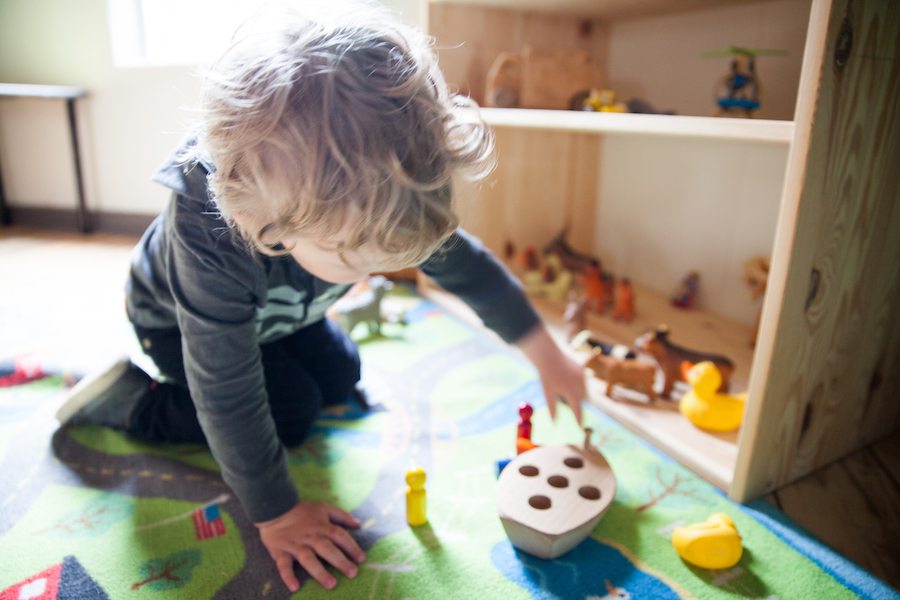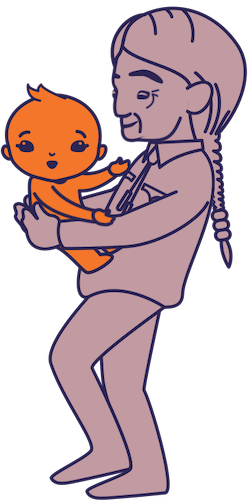
What Does Your Baby See? The World Through a Baby’s Senses
Seeing
Babies are born with fuzzy vision, but not because of their eyes. Babies’ eyes can see clearly from birth, but their brains have to learn to make sense of what they see. At first, babies can see your face if you are holding them close, but not much else. Then quickly, their brains make new connections and the world becomes more clear! Check out this clip showing baby’s vision development from birth to one year.
Hearing
Babies are born fully able to hear, so you can start talking and singing to them right away! Babies who hear a sudden loud sound should startle, though they can tune out loud noises after hearing them several times. Babies will also often stop moving and listen closely when a caregiver speaks to them. Talking and singing to babies is one of the best and easiest ways that families can help babies grow and thrive. Babies who hear more words are likely to build stronger language skills. As babies begin making noises of their own, be sure to talk back! Having back-and-forth “conversations” helps babies build brain connections, bond with their grownups, and learn important life skills, long before they can actually form words.
Tasting
Almost as soon as babies can grasp with their hands, they start putting everything in their mouths. This has a name (“mouthing”) and is part of how babies explore their world. Babies’ lips and mouths are full of nerves that help them explore objects around them. They can tell with their mouths that the edge of a dish towel is soft and chewy, that book covers are firm and taste kind of woodsy, and that putting a rock in their mouth will get a very quick response from their caregivers. Mouthing means you’ll have to do some careful babyproofing, but it’s a great sign that your baby is curious about the world around them. Mouthing also gives you opportunities to talk to your baby about what they’re learning. You could say, “Does that taste good? That’s your giraffe toy; it’s brown and squishy.” Or, because life is life, you could say, “Hmm, that’s not for eating, it’s mommy’s Chapstick.”
Smelling
Babies have a keen sense of smell, and mostly they smell you! Within a few days of being born, babies know their mother’s smell, and prefer it over the smell of an unfamiliar person. Familiar smells can even soothe babies when something painful is happening to them, like a poke for drawing their blood. Studies have found that babies who smelled a familiar smell while getting their blood drawn were calmer than babies without a familiar scent. Because babies don’t see very well at first, they use their keen sense of smell to figure out who they are with and where they are. So, let your baby smell you!

Snuggling
Snuggling is one of the most natural ways we interact with our babies. When a baby is crying, we pick them up to soothe them, rocking them and holding them close. Babies feel safe when they are snuggled tight—especially newborns, who are used to the smallness of the womb. Touch is an important way to bond with your baby, and studies show that affectionate touch can help babies grow, thrive, and even cope with stress in their environment. Touch also helps babies explore the world, and researchers have found that even very young babies are skilled at figuring out what an object looks like just through touch. Even if your baby’s vision is still pretty blurry, they are mapping out what the world looks like through the power of touch. And if all else fails, they can just put it in their mouth.
Want to know more?
New Mexico offers FREE supports and programs for families who have new babies or expect to have them soon. Home visiting is a free program for families from pregnancy through early childhood. Families are paired with a home visitor, who has training and knowledge about baby’s development and can help support families with any stresses or questions they have. Visits are provided in your home, and are currently being offered virtually. To learn more, visit this page, or search for a program in your area at this portal. You can also call 1-800-691-9067 to speak to an expert about early childhood services available near you. Leave a message, and you’ll get a call back within 24 hours (usually sooner!)
Did you find this article helpful?
Subscribe to Bright By Text to get more free tips and resources for your child’s journey, right to your phone!
